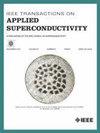Enhancement of Protection Coordination Between OCR and UVR in Power Distribution System According to Application of SFCL and Induction Generator
IF 1.7
3区 物理与天体物理
Q3 ENGINEERING, ELECTRICAL & ELECTRONIC
引用次数: 0
Abstract
In modern power distribution systems, particularly in South Korea, where 154 kV substations supply multiple feeders, faults on a single feeder can cause voltage drops that affect other feeders connected to the same bus. These voltage drops pose significant risks to feeders with sensitive loads, such as semiconductor fabs, which are vulnerable to voltage sags, resulting in productivity and economic losses. To mitigate these issues, Under Voltage Relay (UVR) is used to protect sensitive loads during faults. However, coordinating the operation of UVR on sound feeders with Over Current Relay (OCR) on the faulted feeder is challenging, especially with the application of Superconducting Fault Current Limiter (SFCL) and Induction Generator (IG). This paper studies on protection coordination enhancement between definite-time UVR and inverse-time OCR in power distribution system according to the application of SFCL and IG. Experimental results showed that applying SFCL and IG can cause OCR's delayed operations and malfunctions in UVR. Therefore, this research adjusted the appropriate pickup values to resolve these issues. The analyses reveal that adjusting pickup values can enhance protection coordination between OCR and UVR. Also the results show that when both SFCL and IG are applied to the faulted feeder, the range of adjustable OCR pickup values is wider than when only SFCL is applied, leading to further improved protection coordination.从SFCL和感应发电机的应用加强配电系统OCR与UVR的保护协调
在现代配电系统中,特别是在韩国,154千伏变电站提供多个馈线,单个馈线的故障可能导致电压下降,影响连接到同一母线的其他馈线。这些电压降对敏感负载的馈线构成了重大风险,例如半导体晶圆厂,它们容易受到电压下降的影响,导致生产力和经济损失。为了缓解这些问题,在故障期间使用欠压继电器(UVR)来保护敏感负载。然而,在正常馈线上的UVR与故障馈线上的过流继电器(OCR)协调运行是具有挑战性的,特别是超导故障限流器(SFCL)和感应发电机(IG)的应用。本文从SFCL和IG的应用出发,研究了定时UVR与逆时OCR在配电系统中的保护协同增强问题。实验结果表明,在UVR中使用SFCL和IG会导致OCR操作延迟和故障。因此,本研究调整了合适的拾取值来解决这些问题。分析表明,调整拾取值可以增强OCR和UVR之间的保护协调性。同时对故障馈线同时施加SFCL和IG时,可调OCR拾取值的范围比只施加SFCL时更宽,从而进一步提高了保护的协调性。
本文章由计算机程序翻译,如有差异,请以英文原文为准。
求助全文
约1分钟内获得全文
求助全文
来源期刊

IEEE Transactions on Applied Superconductivity
工程技术-工程:电子与电气
CiteScore
3.50
自引率
33.30%
发文量
650
审稿时长
2.3 months
期刊介绍:
IEEE Transactions on Applied Superconductivity (TAS) contains articles on the applications of superconductivity and other relevant technology. Electronic applications include analog and digital circuits employing thin films and active devices such as Josephson junctions. Large scale applications include magnets for power applications such as motors and generators, for magnetic resonance, for accelerators, and cable applications such as power transmission.
 求助内容:
求助内容: 应助结果提醒方式:
应助结果提醒方式:


